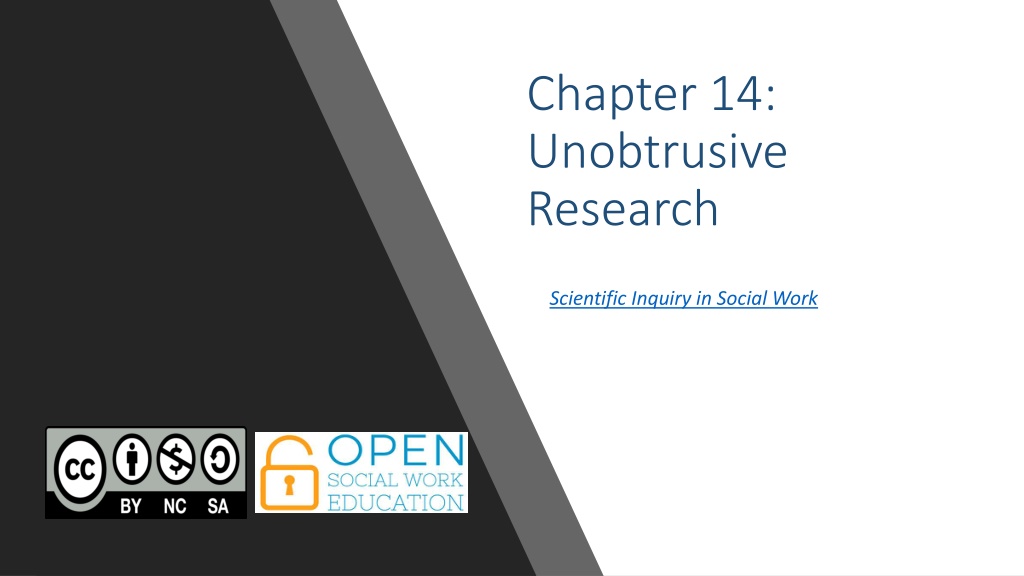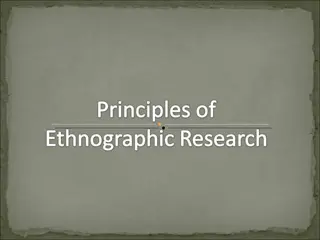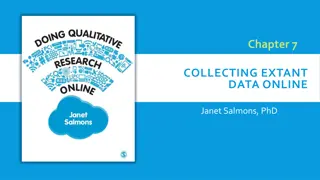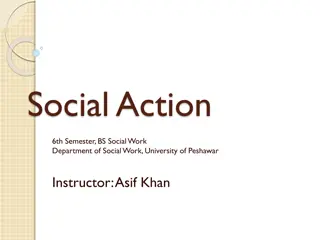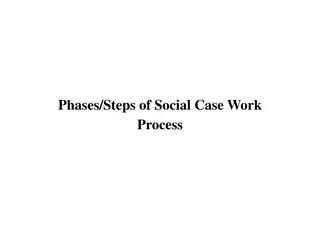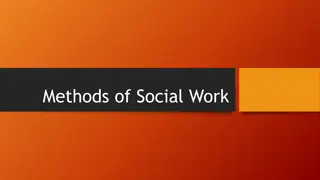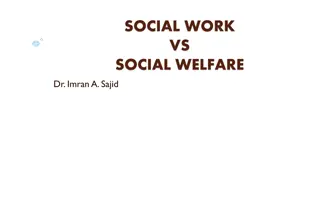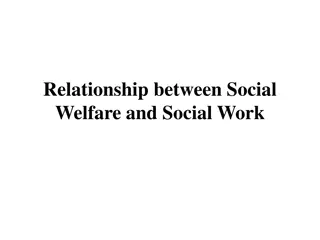Unobtrusive Research Methods in Social Work: A Comprehensive Guide
Explore the realm of unobtrusive research methods in social work, where data collection is done without disrupting subjects. Learn about historical analysis, content analysis, and the importance of using qualitative and quantitative approaches. Discover how to identify and analyze historical data sources effectively while considering the strengths and limitations of unobtrusive measures.
Download Presentation

Please find below an Image/Link to download the presentation.
The content on the website is provided AS IS for your information and personal use only. It may not be sold, licensed, or shared on other websites without obtaining consent from the author. Download presentation by click this link. If you encounter any issues during the download, it is possible that the publisher has removed the file from their server.
E N D
Presentation Transcript
Chapter 14: Unobtrusive Research Scientific Inquiry in Social Work
Chapter Overview In this chapter, we will explore unobtrusive methods of collecting data. Unobtrusive Research refers to methods of collecting data that don t interfere with the subjects under study. Qualitative and quantitative Unique in that they do not require the researcher to interact with the people you study
Historical analysis Content analysis Secondary data Why unobtrusive measures?
Generally qualitative methods are used to examine past developments with goal of informing present Also used to inform cross-cultural comparisons, esp. in policy research Consider primary vs. secondary sources Hermeneutics: art of interpretation Historical & Comparative Research
If you were to design a historical study in your topic area Where might you go to find historical data? What archives might you need access to? What questions would you want to ask? Identifying sources of historical data
No Hawthorne effect Cost-effective (usually) Can correct mistakes Historical analysis Validity problems Data may not exist Limited ability to understand context Strengths and limitations
Who says what, to whom, why, how, and with what effect? Studying texts and their meaning Text: printed materials, visual media, performances, art Primary vs. secondary sources Not a lit review Coding sheet Content analysis
Qualitative: identify themes, identify meaning of themes Quantitative: assigning raw values to data for statistical analysis Physical traces: need to understand context in which it was created The deeper you go into each text, the less you can cover Inductive vs deductive analysis Content Analysis: Choices
Lies my teacher told me Conversation with Dr. Loewen https://youtu.be/PzsHvK7nUi 4?t=2m12s How are students taught history? Qualitative content analysis Anti-racist framework
What texts could we analyze that might address the migrant caravan and our nation s immigration policy? Content analysis example How could we analyze current texts using content analysis? How could we analyze historical texts using historical analysis?
Collected by another researcher Cost-effective, less time Purpose may include: Answering a new research question Replicating results using different statistical methods Analyze unanalyzed data Usually uses large datasets from surveys, other large studies Example: Census data or American Community Survey data Secondary data
Disadvantages Data may be out of date Study may have used outdated definitions, diagnoses, vocabulary No control over type of data collected Missing data Complicated coding, weighting Lack of documentation from original study Secondary data (continued)
Search the Institute for Social Research ICPSR database: https://www.icpsr.umich.edu/web/pages/ICPSR /index.html Secondary data activity Find a dataset you might be able to use on a project related to your question Identify potential sources of secondary quantitative data for your project or a close topic. What research questions might you be able to answer with secondary data?
Stability: do you code the same thing the same way each time? Methodological notes, coding rules Auditing, peer review Intercoder reliability: do all researchers on your project code the same data in the same way? Peer review, conferencing Methodological notes, coding rules Statistical analysis Reliability in unobtrusive measures Accuracy: does your coding meet an objective standard? Example: clear, accessible language = Clear Communication Index https://www.cdc.gov/ccindex/index.html
